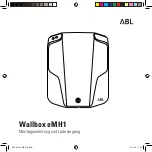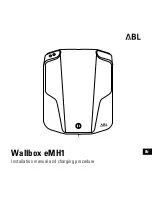
WHEELS AND TIRES
544
Uniform Tire Quality Grading
ALL PASSENGER VEHICLE TIRES MUST
CONFORM TO FEDERAL SAFETY
REQUIREMENTS IN ADDITION TO THESE
GRADES
.
Quality grades can be found, where applica-
ble, on the tire sidewall between the tread
shoulder and maximum section width. For
example:
Treadwear 200 Traction AA Temperature A
TREADWEAR
The treadwear grade is a comparative rating
based on the wear rate of the tire when tested
under controlled conditions on a specified
government test course. For example, a tire
graded 150 would wear one and one half (1 ½)
times as well on the government course as a
tire graded 100. The relative performance of
tires depends upon the actual conditions of
their use, however, and many depart signifi-
cantly from the norm due to variation in driving
habits, maintenance practices and differences
in road characteristics and climate.
TRACTION
The traction grades, from highest to lowest,
are AA, A, B, and C, as measured under con-
trolled conditions on specified government
test surfaces of asphalt and concrete. A tire
marked C may have poor traction perform-
ance.
WARNING
The traction grade assigned to this tire is
based on braking (straight-ahead) traction
tests and is not a measure of cornering
(turning) traction.
TEMPERATURE
The temperature grades are A (the highest), B,
and C, representing the tire's resistance to the
generation of heat and its ability to dissipate
heat when tested under controlled conditions
on a specified indoor laboratory test wheel.
Sustained high temperature can cause the
material of the tire to degenerate and reduce
tire life, and excessive temperature can lead to
sudden tire failure. The grade C corresponds
to a minimum level of performance that all
passenger vehicle tires must meet under the
Federal Motor Safety Standard No. 109.
Grades B and A represent higher levels of per-
formance on the laboratory test wheel than
the minimum required by law.
WARNING
The temperature grade for this tire is estab-
lished for a tire that is properly inflated and
not overloaded. Excessive speed, under-
inflation, or excessive loading, either sepa-
rately or in combination, can cause heat
buildup and tire failure.
Related information
•
•
Содержание S60 Twin Engine 2020
Страница 1: ...XC60 T W I N E N G I N E OWNER S MANUAL...
Страница 2: ......
Страница 17: ...15 INDEX Index 667...
Страница 18: ......
Страница 19: ...OWNER S INFORMATION...
Страница 28: ......
Страница 29: ...YOUR VOLVO...
Страница 45: ...SAFETY...
Страница 85: ...DISPLAYS AND VOICE CONTROL...
Страница 156: ......
Страница 157: ...LIGHTING...
Страница 170: ......
Страница 171: ...WINDOWS GLASS AND MIRRORS...
Страница 188: ......
Страница 189: ...SEATS AND STEERING WHEEL...
Страница 205: ...CLIMATE CONTROL...
Страница 237: ...KEY LOCKS AND ALARM...
Страница 272: ...KEY LOCKS AND ALARM 270 Related information Alarm p 268...
Страница 273: ...DRIVER SUPPORT...
Страница 385: ...HYBRID INFORMATION...
Страница 402: ......
Страница 403: ...STARTING AND DRIVING...
Страница 471: ...AUDIO MEDIA AND INTERNET...
Страница 537: ...VOLVO ON CALL...
Страница 539: ...WHEELS AND TIRES...
Страница 570: ......
Страница 571: ...LOADING STORAGE AND PASSENGER COMPARTMENT...
Страница 590: ......
Страница 591: ...MAINTENANCE AND SERVICE...
Страница 654: ......
Страница 655: ...SPECIFICATIONS...
Страница 668: ......
Страница 685: ......
Страница 687: ...TP 28799 English USA Canada AT 1917 MY20 Copyright 2000 2019 Volvo Car Corporation...
















































